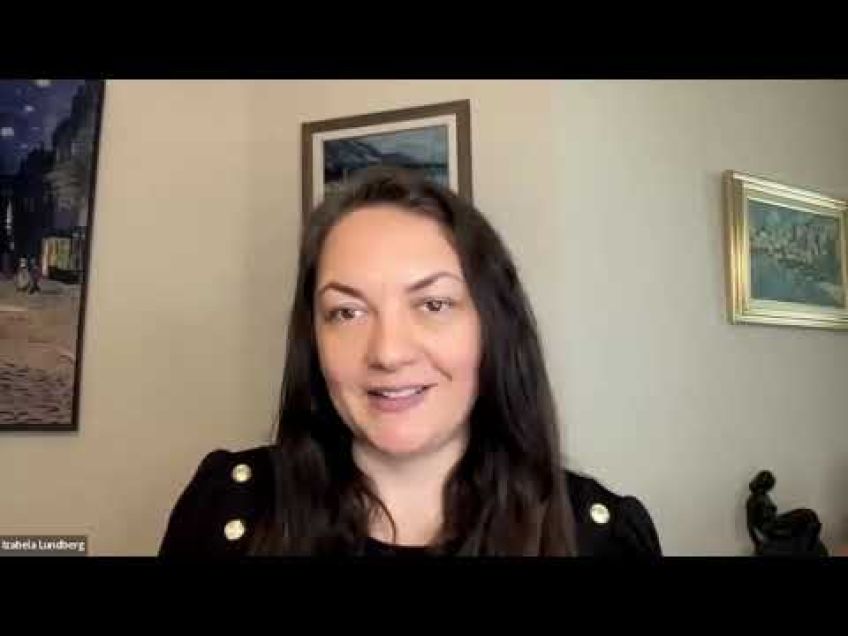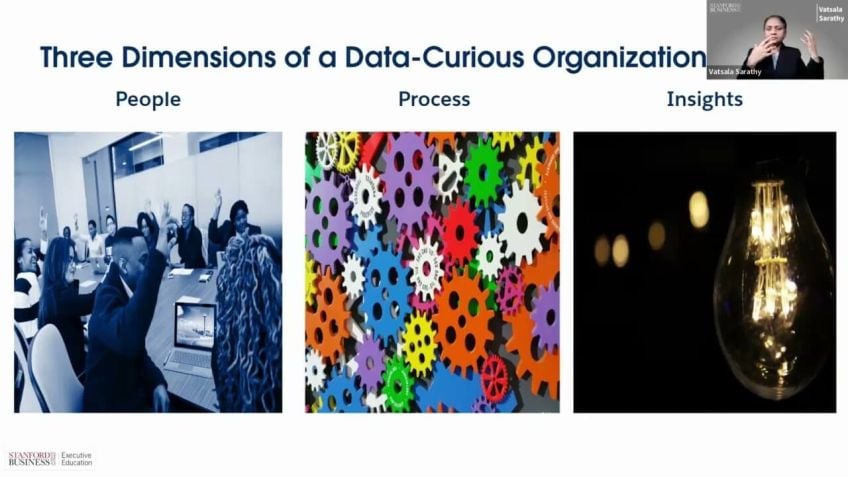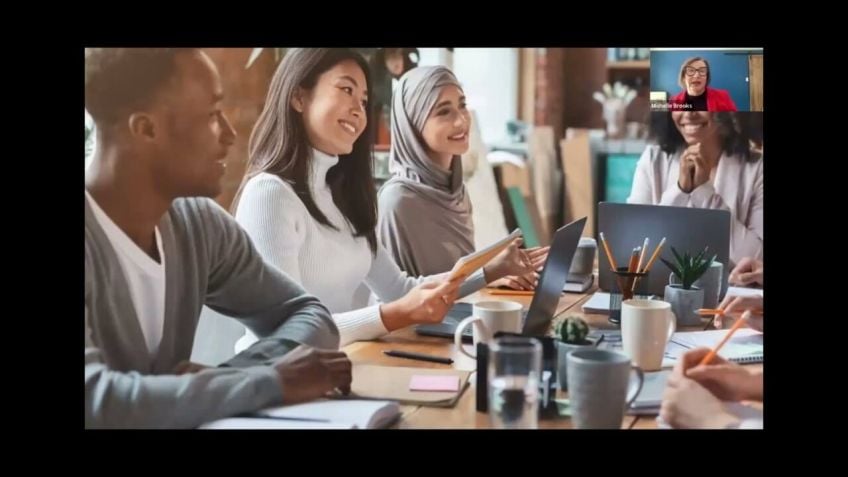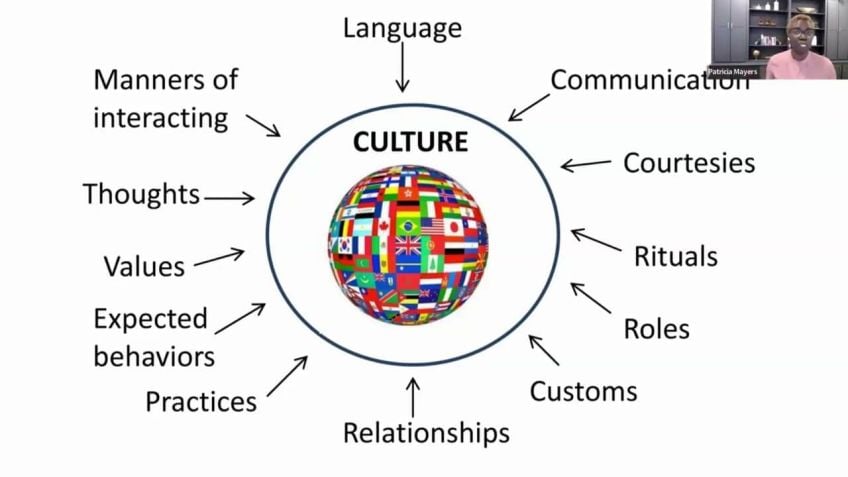What’s the Culture Like There? A Healthy Culture Begins with a Plan
Creating a Healthy, Empowering, and Inclusive Culture Using the Cares Model
Today, we're addressing a crucial component of any successful organization - a healthy and inclusive culture. The need for a positive organizational culture is undeniable. The goal is to establish a culture by design and not by default. Drawing inspiration from the best places to work, I developed a model named Cares to foster an environment where people relish their workdays. This discussion will elucidate the Cares model and its successful application in various organizations.
Introducing the Cares Model
The Cares model is a tangible framework aimed at aligning employees' values with their work culture. By creating a culturally healthy workspace, you not only ensure a positive environment but also significantly boost your organization's results. This model allows you to implement useful insights almost instantly, making it an effective shortcut to reinforce a healthy work culture.
Success Stories of the Cares Model
Several organizations have effectively leveraged the Cares model to enhance their work culture. Let's take a brief snapshot of the significant improvements some of these organizations attained.
- Colorado College: Apart from realizing a noticeable rise in commitment, trust, and talent optimization through the Cares model, Colorado College also reported up to 94% improvement in psychological safety and 68% surge in workplace appreciation levels.
- Microsoft: Leaders often ponder how to define work culture. A leader at Microsoft simplified this crucial aspect by defining work culture as 'chemistry'. The right chemistry within a team fosters an extremely healthy work environment, uplifting the overall workplace dynamics and energy.
Understanding the Components of the Cares Model
The Cares model stands on five fundamental pillars - Commitment, Appreciation, Respect, Engagement, and Safety. These components translate to building a culture and teams that work in harmony while achieving significant milestones in their organization.
- Commitment: Leadership commitment forms the cornerstone for employee loyalty and accountability. The first step requires leaders to envision the desired employee experience within the organization.
- Appreciation: Leaders should acknowledge and appreciate the individuality and performance of their employees. This recognition can yield stronger bonds with the workforce and significantly boost their morale.
- Respect: Fostering an atmosphere of mutual respect is undeniably crucial. Respecting diversity and instilling a sense of belonging invariably attracts employees to their workplace and enhances their performance.
- Engagement: Engaged employees exhibit a higher drive, purpose, passion, and commitment towards their work. Complementing this with a culture of learning significantly reduces workforce attrition.
- Safety: The foundation of a healthy work culture lies in ensuring psychological safety. The term coined by Amy Edmonson, a Harvard Business School professor, refers to the freedom and security to voice ideas and concerns openly.
To create a favorable work environment, the Cares model suggests starting with measuring current levels of safety, engagement, respect, appreciation, and commitment among the employees. Leveraging the power of the Cares model, organizations can answer the crucial question- What is the culture like here?
Conclusion
In the seemingly simple structure of the Cares model, often lies the solution to the complex problem of establishing an empowering and inclusive work culture. By diligently applying this model, leaders have the potential to unlock the full human potential within their organization leading to surges in innovation, financial growth, and of course, employee satisfaction and happiness.
Video Transcription
But welcome. I'm so happy that you're here.We're talking today about creating a healthy empowering and inclusive culture within your organization to create a culture by design and not to fault. And so today you're gonna learn about the Cares model and it's a model I created based on research of what best place to work award winning companies do to create a culture of where their people love to come to work every day. And that's my personal passion that people are happy and healthy at work. You're gonna gain some insights that you can use tomorrow. So it's it's not like you need like a big old plan or anything. You can you can actually just start taking action, tomorrow if if there's anything in here that calls to you, and then I'll share some case study results for other organizations that have leveraged the care's model as a shortcut to build a culture that aligns everybody's values together and, and it really changes the results within your organization.
And at the end, I I'll give you a like a QR code to get a to get a gift, which is I will download all the I've downloaded all the slides. And if you answer a 1 or 2 minute quick feedback survey, you'll get to download these slides right away so you don't really have to worry too much about taking notes if you just wanna listen in. So hi. I'm Marsha Donsinger, and I am the CEO and founder of Fidal Biz Consulting. We're a consulting group focused a 100% on culture building, leadership development, leadership coaching, and, these are some of the organizations that we've been working with. My tech background starts back with Arrow Electronics, which you can see here, and I'm back in 99, I started in the tech industry and and, inside sales for a large computer distributor called Maricel. And that was when the dotcom bubble and the dotcom rise was happening was a really exciting time.
We couldn't keep products on the like everyone was buying enterprise computers, which is what we were selling. And then, in 20,021,001, the bubble started to burst. And, you know, I lasted throughout there, throughout the early 2000. So I got to experience the tech industry in its total hay day as well as the total decline and demise. So it was a crazy time, but I learned so much and most of what I learned was about culture. We had the leaders of our department within our organization, our department sold some micro systems to resellers and the leaders just were so amazing at focusing on creating a healthy culture where people could do their best work. And the most amazing part about that was that our department within our larger company was the only profitable division within our company.
And our company after the dot com bust started our company ship started sinking. You know, we're losing business all over the place except our division. And I know that the difference in our division was bought by Arrow Electronics here, which is a fortune 100 company, and everyone, our division kept their jobs. And we kept on growing in and, being profitable within the aero family. So I tell you this because the difference between what I believe our department, our profitable department was that our our culture was very relational. People had such a strong camaraderie with each other. And they and we love to be with each other and we worked hard and we played hard. It was just such a cool, like, experience. There's probably fifty people in our division. The rest of the company, our company, was more transactional.
And this was with Maricel before Arrow. So they were more transactional. They had small margins and they just, you know, couldn't survive the dot com bus, which is why Aero found us and as a and as a division, we became part of Arrow. So culture really matters. It impacts profitability. It impacts retention. It impacts re recruitment, and it just builds a strong team where you're able to achieve amazing results together. So one of our clients to so today, you know, as I mentioned, we're helping with culture strategy, leadership coaching, and training, and development. One of our clients is Microsoft. And I was talking to one of the leaders recently and we really wanted to like lay the groundwork with his team and and define work culture. So I would like to ask you, like, how would you define work culture?
There could there are so many different definitions if you Google that but how Microsoft defined it? This person I thought was genius. He defined it as chemistry. And it is. It's really that chemistry that your team has together just like this example I just shared with you. At our Maricel division that got bought with Arrow. The chemistry within our department was just unmatched. From anything I'd ever worked with before or after to be frank. And it's just it is it's always a guiding star for me that I know, you know, that we can do it. And that there is a way to to create that really healthy chemistry between the people. It's the team dynamics It's all like the invisible things that happen, the energy between people.
So how do you build a culture and teams that work so well together that they're just firing on all cylinders and making the organization successful. We focus on on the chemistry. Now we know that the costs of a toxic culture are huge. It's either lack of prop profitability. It's either a mass exodus of your best talent. And when people leave, the latest research now says it could cost the organization three to four times a person's annual salary. So think about that. If someone at making a $100,000, it could cost 3000 just to replace that person. And, and there's tons of research about the ROI of investing in your culture and attaining people, making sure that the employee experience is great.
And so this is just, you know, a bottom line number that you can put to it to hopefully, you know, make sure that this is top of mind and a focus of your organizations. There's a lot of barriers to success, and these are just a few of them. And it, you know, some other research says that 50% of employees would leave for a competing company with a better culture, which is actually pretty logical. Because once you have, like, Salary and benefits, if those are equal and one company has a better culture and one company you're miserable at, I mean, you know what's gonna happen next. So this is what we're sharing with our clients. It's really important to remember that even as technology increases the pace of change exponentially. People don't change that fast. We are just human beings doing the best we can with what we have on a given day.
And so it's it's really something to think about that just because we expect our technology to change fast that we've gotta, like, help the people like, adapt to the change. And especially in our in our tech industry, it's just it's exponential. What we are having to deal with and, and we really need to have some empathy for the people working within these changing systems. So I'm gonna get to get the cares model in a minute, but I just wanted to share what research some of the re I did a lot of research. Here's one of the things that I really look towards as a North star for thinking about culture. And a great place to work for all has done decades of research on this and they have, you know, lots of award winning companies that meet these criteria.
But if you're if you're at a starting place with thinking about how to improve your culture, you've gotta start with these three gray bars here on the left. How effective is the leadership? What values are the employees aligning to? Are they aligning to the company values or not, did the employees have any input into the company values and trust? Trust is just you know, the first thing that the hardest thing sometimes to build, especially if it's been broken, you've got it will take time to build, but you can't have a functioning company if there's a lack of trust across the board. So when you can really look at values trust and leadership effectiveness, This is the pathway to maximizing the human potential within your company. And when you can do that, you've got innovation and financial growth, which every company wants to have.
So this was just a really clear framework I thought, that I lean into when I'm trying to delve around problems. So this, this session is called, what's the culture like there? Because a lot of candidates, almost every candidate will probably ask as they're entering into potentially working for an organization, they wanna know what the culture's like there. What's their daily life gonna be? It's not just about the salary and benefits. That's just like the that's just the ticket to get in, but then once they're in, it's about the culture and how they feel at work, how they feel with their with their, colleagues? Do they feel valued, respected, appreciated? And these are the things that hold on to the talent that you work so hard to find.
And a leader, while everyone has an impact on the culture, the leaders have an outsized impact on the culture. So it's really important that we start from the leadership level and create a common language to define the culture. So here I'll talk to you about culture cares and before I get into describing the model I wanna share some case study results that we just had So I just worked with Colorado College and, a division, the advancement division of 40 staff people. And when they came to me, they were looking to build a a culture. They didn't they didn't have anything like really defined. They didn't have values defined. And so we went on this journey together over the last year and the results they experienced were so incredible out of 27 metric that we measured. Every single one of them a 100% went up and most went up significantly.
Here are a few of of the questions that where they increased like psychological safety here in the blue bar that went up 94% from a year prior. Building trust 86% improvement, optimizing talent's strengths and motivators up 78%. The orange bar has to do with psychological safety that went up 68% and also appreciation celebrating departmental wins went up 68%. So I just wanna share that because they they do credit it to the cares model in that the cares model gave them a process and a structure and a shortcut with which to build their culture. So here is the cares model. It's very simple. It's a pyramid. I am a psychology and business major from college, so I love psychology and what makes people tick. And so Think about the Maslow hierarchy of needs. That is the psychology and the science of human motivation.
And what I did was I translated that to organizational motivation and organizational teams. And so Cares is an acronym for commitment, appreciation, respect, engagement, and safety. And as with the Maslow hierarchy of needs, as humans, you know, the first thing we have to have is the foundation, which is this bottom one here. We need a foundation of food, clothing, security, safety, physical safety, and that but what I get into from an organizational perspective is, psychological safety. And I'll I'll share a bit about that in a second. But the first step in building a healthy culture and creating a plan is to measure the baseline and you can do this with, employee surveys. We have the care survey that I utilize with my clients. You can use any survey.
As long as you're, like, testing the same questions over and over interviews, and giving people an anonymous slash confidential way to share their feedback of where they're at in the moment. So when you're building the pyramid up from the base, we start with say and this is this is a a term coined by Amy Edmonson. She's a professor at Harvard Business School. If you're not familiar with psychological safety, the initial definition is a belief that one will not be punished or humiliated for speaking up with ideas questions, concerns, or mistakes. And if you wanna learn more, this is a great resource, called the Fearless organization which is written by Amy Edmonson. And the research is clear if you have a psychologically safe environment for your people, It's the number one indicator of inclusion, innovation, and performance.
There's 4 dimensions and we can go we're not gonna go deep into it because they don't have much time, but these are the are the 4 dimensions that you can think about psychological safety. And, and really something you can start tomorrow is open conversations. And it's really having a conversation with if you're a manager with your direct report, to say, you know, how are we doing here from your perspective? Do you feel like it's safe to share ideas without feeling like Shane that you spoke up? Do you feel like there's a strong willingness to help? Do we have a healthy attitude towards risk and failure or are you punished for every mistake? Do we have a sense of inclusion diversity and belonging here? Now what psychological safety is not is almost just as important to know because some people think it's, oh, this is such a soft skill and we don't have time for it.
It's not a soft skill. It's actually pretty hard skill. Takes a lot of emotional intelligence. Empathy and and that's where you'll be coming from as a place of empathy when you're having this conversation. It's not about being nice It's about really respecting the other person. It's not about consensus. Sometimes a decision has to be made. It's always best to get some input and then explain why the decision was made in a different direction, to the person. And then it's not a shield from accountability. Like, this is a when and psychological safety is a number one indicator of high performance. That means that these teams are who feel psychologically safe are very high performing. And then we level up to engagement. And engagement is really a sense of someone's commitment, motivation, sense of purpose purpose and passion for their work.
It's a culture of learning, and we find that the research finds that organizations that are in the top 20% of engagement sees significantly less turnover on their teams. I don't know if you've seen this book out. It's in all the airports, and I picked it up when I was, you know, headed to a flight once. But I really liked it. Of course, they talk about cold during here because with all of the, you know, the AI and and the pace of change accelerating so quickly with technology, we need to, like, bring the humans with us and remember that what humans provide to a company that are outside of what technology robots or a AI can do.
So it's really critical to think as an organization to upskill human, the human skills that are needed to make decisions as our world is changing so quickly. So one of the things our company does is we offer this 10 module training program, and it's so incredible. It teaches uniquely human skills. These are things that are gonna need to be reinforced as everybody's moving so quickly. But there's this one on managing change is one that I recommend. Each of these trainings from our company is 6 to 8 hours. So, for about 25 to 30 people at a time, values and ethics, does that book I just mentioned, from that from Harvard Business Review on the last slide, they talked that a lot about humans needing to really instill values and ethics around how this technology is being implemented in our world.
Expect. I love this book. I recommend it's called Leading Inclusion, and Gina Cox is a colleague of mine. She says ready. Is a respect first model, so ready is, respect, equity, diversity, and inclusion. Respect first because of leaders don't first ensure that under presented employees feel respected. Of course, there's a lot of different diversity to look at and really building a culture of belonging for every single one, making sure everybody feels welcome, is a really important part of going to work. And when pea no surprise when people feel respected, they are much more likely to look forward to going to work, right? And then we level up to appreciation. This is a really great book, the languages of appreciation in the workplace, and it it really talks about how how appreciation can be customized and personalized for each person. So so learning about what people do, what people like, how people like to be recognized is, is important to kind of deepening the relationship with the employee and that's how you you form a stronger connection.
Commitment is really the cherry on the top of the Sunday. It's really what you're looking to get from the people within your organization. A strong commitment and loyalty to achieving results. It's about accountability responsibility, but it starts with the leaders It starts with a leadership team saying we need a healthy, inclusive, and empowering environment for our people to thrive, and they can create the leaders I recommend create a culture vision. What kind of employee experience do you wanna lead at the company? And when you start with that commitment and then you commit to measuring and then acting on the feedback of people, you're gonna see that's how Colorado College saw such incredible increases in in their trust and safety, respect, and appreciation scores is because the leadership was committed at the top and then and then brought everyone along with them.
So what's the culture like there? When you ask that question, if you're if you have a language defined, it it could be the cares language. You you know, you could say, we these are our values. We value commitment, appreciation, respect, engagement, and safety, and the and the values under here are all customizing curated by your company. So I lead like visioning sessions to make sure that we bring the values that are already present within your organization into the care's model and customize it for each company. So I here is a case study. I don't think we have time to go through it, but it will be on the slides that you will get in the end.
And These are, oh, these are different ways that we work with with organizations and you'll get that in the end too. I feel like we're almost that time now. This is about our managing change training program. And now I would just like to give you some options to stay connected. The first thing is we are having an executive virtual conversation on motivation through q 2 or meeting with executives and talking about opportunities and challenges to keep people motivated through the second quarter. I'm happy to do a private encore session for your leadership team. Just let me know. And as always, you're ready to meet with people one on 1, discuss your unique challenges, and, see if there's any way that we can support you on your journey. And now I'm gonna give you, a QR code where you can download, not the case study, but you can download that these slides.
So you have all the resources in hand. And I can't see if there's anything in the chat while I'm sharing my screen so I apologize. Hopefully, you have your phone handy and can scan this QR code. And now Then you'll you'll be able to download the slides immediately. So with that, I'd like to thank you so much for your time. Sorry. I some tech issues in the beginning.





